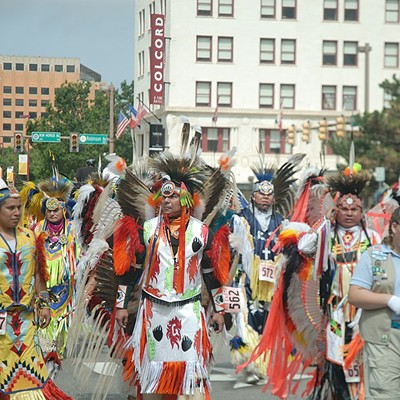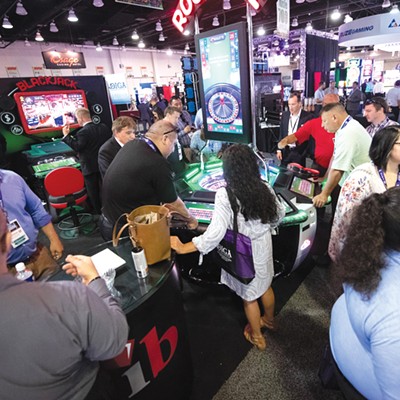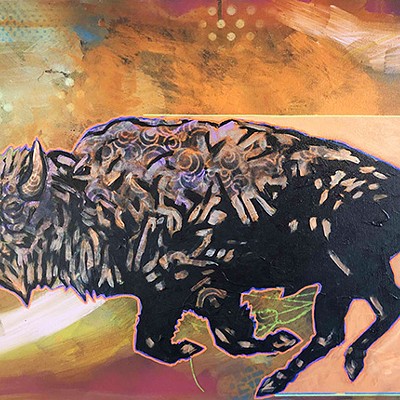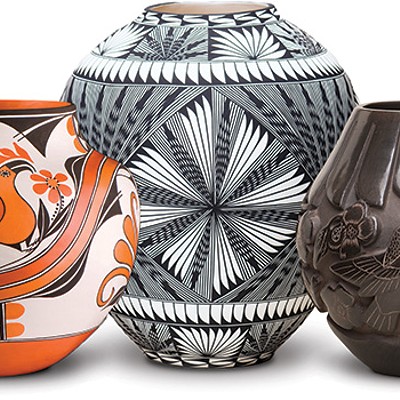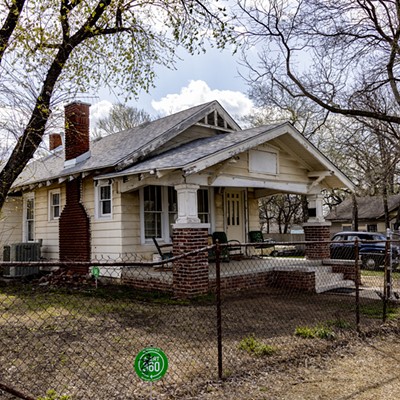As one of the most important rituals within a powwow, the grand entry at Red Earth Festival in Oklahoma City is a powerful and unrepeated sight as it displays tradition, culture, color and the coming together of all people.
As the thunderous beats of the drums begin, dancers representing dozens of North American tribes enter the arena dancing, swaying and moving with chants. Dressed in colorful and vibrant regalia, the dancers and drum groups are all rhythm, motion and sound, performing songs and dances passed down through generations.
“It’s almost like a kaleidoscope of colors,” said Eric Oesch, Red Earth, Inc. deputy director. “It is such an athletic dance with almost a whirl of colors. It is just so inspiring.”
While Red Earth Festival began in 1987 with a goal of showcasing native arts and crafts, an integral part of the well-known festival is the powwow dance exhibition and competition. Music and dance are a fundamental component of American Indian culture — as much so as arts and crafts.
Now entering its 31st year, the festival continues as a celebration of Native American culture with its art market, powwow, parade and hand game tournament. This year’s festival is June 9-June 11 at Cox Convention Center, 1 Myriad Gardens.
One-of-a-kind event
Over the course of the festival’s storied career, Red Earth has earned national and international accolades. USA Today named it one of the 10 greatest places to celebrate American Indian culture.Part of its appeal, said Oesch, is Red Earth is truly a celebration of the rich traditions of American Indian arts and culture. Unlike the Santa Fe Indian Market in Santa Fe, New Mexico, and Heard Museum Guild Indian Fair & Market in Phoenix, Arizona, Red Earth Festival combines an arts market and a powwow into one event.
“What we do at Red Earth is showcase what makes Oklahoma unique,” Oesch said. “What makes Oklahoma unique is its tribal heritage. No other state has what we have with a wide and diverse range of people.”
Oklahoma is home to 39 federally recognized tribes that are headquartered and have tribal jurisdictional areas in the state. Only a handful of those tribes are considered indigenous to the state. More than 180 years ago, the federal government, through forced removals, uprooted tribes to Oklahoma.
Each tribe brought to Oklahoma its own unique culture in areas of art, stories, songs or rituals, dress, cuisine and language. Red Earth, where members from tribes across Oklahoma and the United States present their culture, is one of the most exhilarating ways to immerse in and experience Native American culture, Oesch said.
International crowd
In addition to its festival, Red Earth, Inc. operates an art center downtown at 6 Santa Fe Plaza. Each year, visitors from across the United States and beyond come to view Native American art, including pottery, beadwork and paintings.Visitors get an up-close view of regalia and a unique cradleboard collection, to name just a few of the museum-quality exhibits.
Gallery visitors reflect the growing numbers of international tourists who visit the festival each year, Oesch said.
People have traveled to Red Earth from China, Australia and European countries, including Germany and the United Kingdom.
“It is not uncommon to be walking up and down the Red Earth aisles of the art market and hear people speaking German,” Oesch said. “Our audience is very diverse with many people coming from outside of Oklahoma. I think we are almost to the point where we have just as many out-of-towners as people from in town.”
Oesch said there is a strong fascination among Europeans, especially Germans, with Native American culture. Since European cultures allow for long summer vacations, many travel to the United States for cross-country trips, typically along Route 66, and plan a stop in Oklahoma City during Red Earth.
Festival highlights
The Red Earth Parade kicks off the three days of festivities 10 a.m. June 9 at Myriad Botanical Gardens, 301 W. Reno Ave. Parade participants include tribal officials, princesses, dancers, drum groups, color guards, music groups, community organizations and veterans groups.During the festival, the art market opens at 10 a.m. each day. Native artists from across the country display and sell their contemporary and traditional beadwork, basketry, jewelry, pottery, sculpture, paintings and cultural attire.
An “ask the expert” session returns to this year’s event 1-3 p.m. June 9. Guests are invited to bring Native art pieces or artifacts from their own collections to learn about their cultural significance and authenticity.
After a two-decade absence, a hand game tournament returns to the festival. Sponsored by Oklahoma City Pow Wow Club, it runs 10 a.m.-4 p.m. June 11. A hand game, or a stick game, is a Native American guessing game between two teams. The game includes music.
“It is really loud, a lot of raucous and lots of songs,” Oesch said. “Team one has the bones and team two watches. Team one is singing, dancing and hopping while passing these bones back and forth. The other team tries to keep track of the bones.”
Print headline: Native experience, Red Earth Festival highlights culture for locals and visitors alike in its 31st year.


